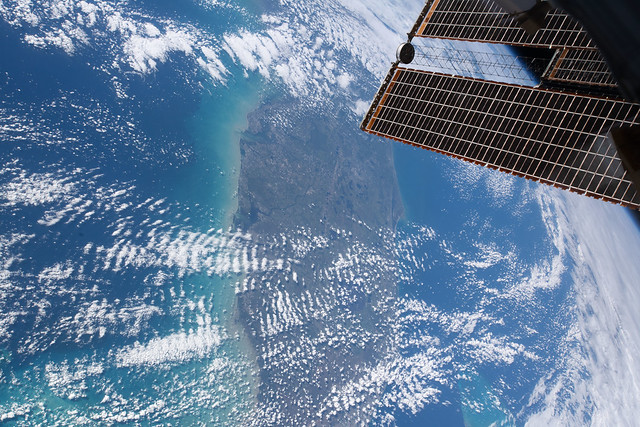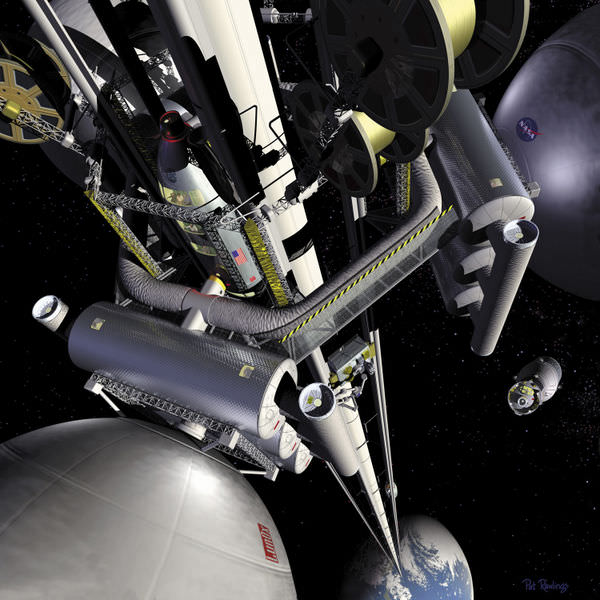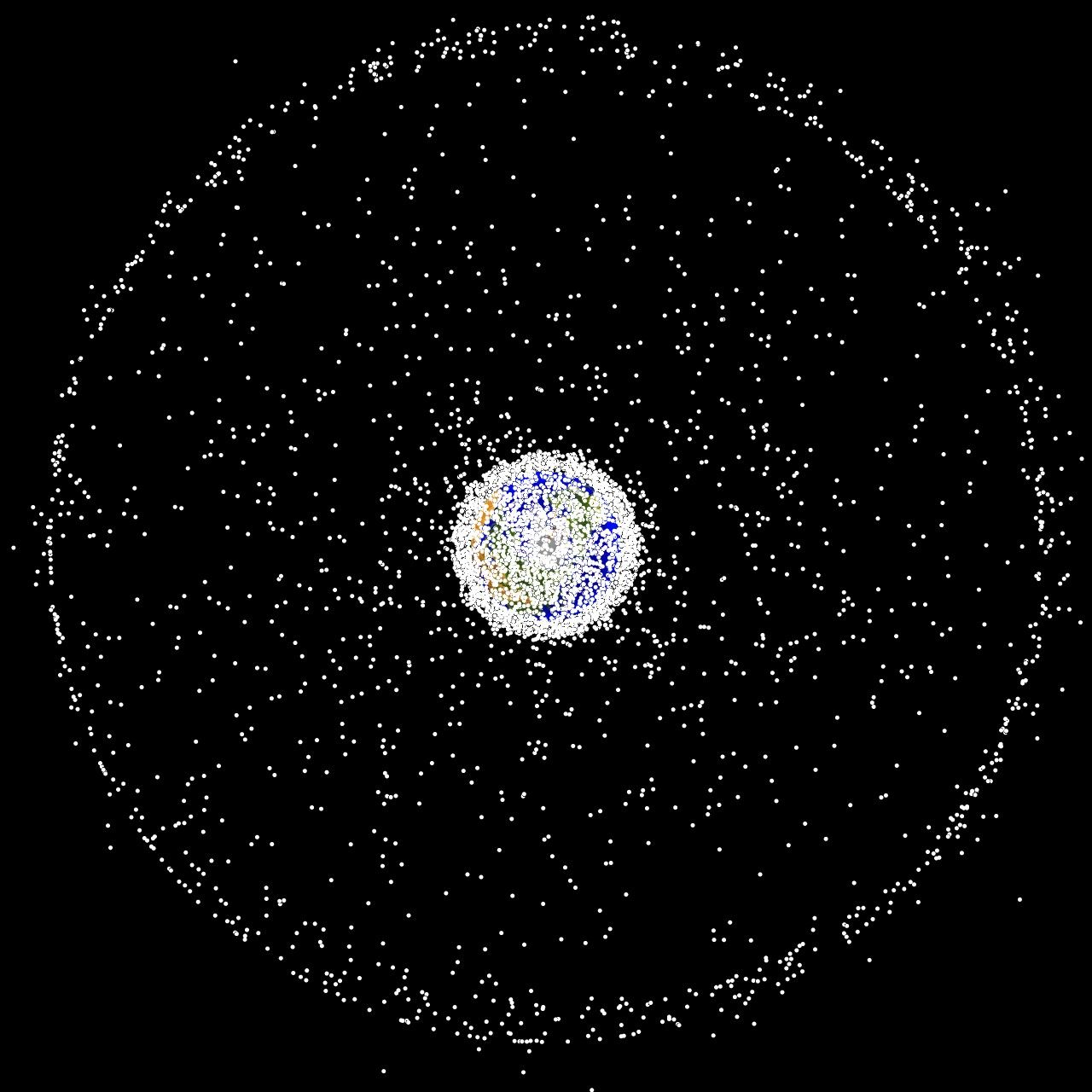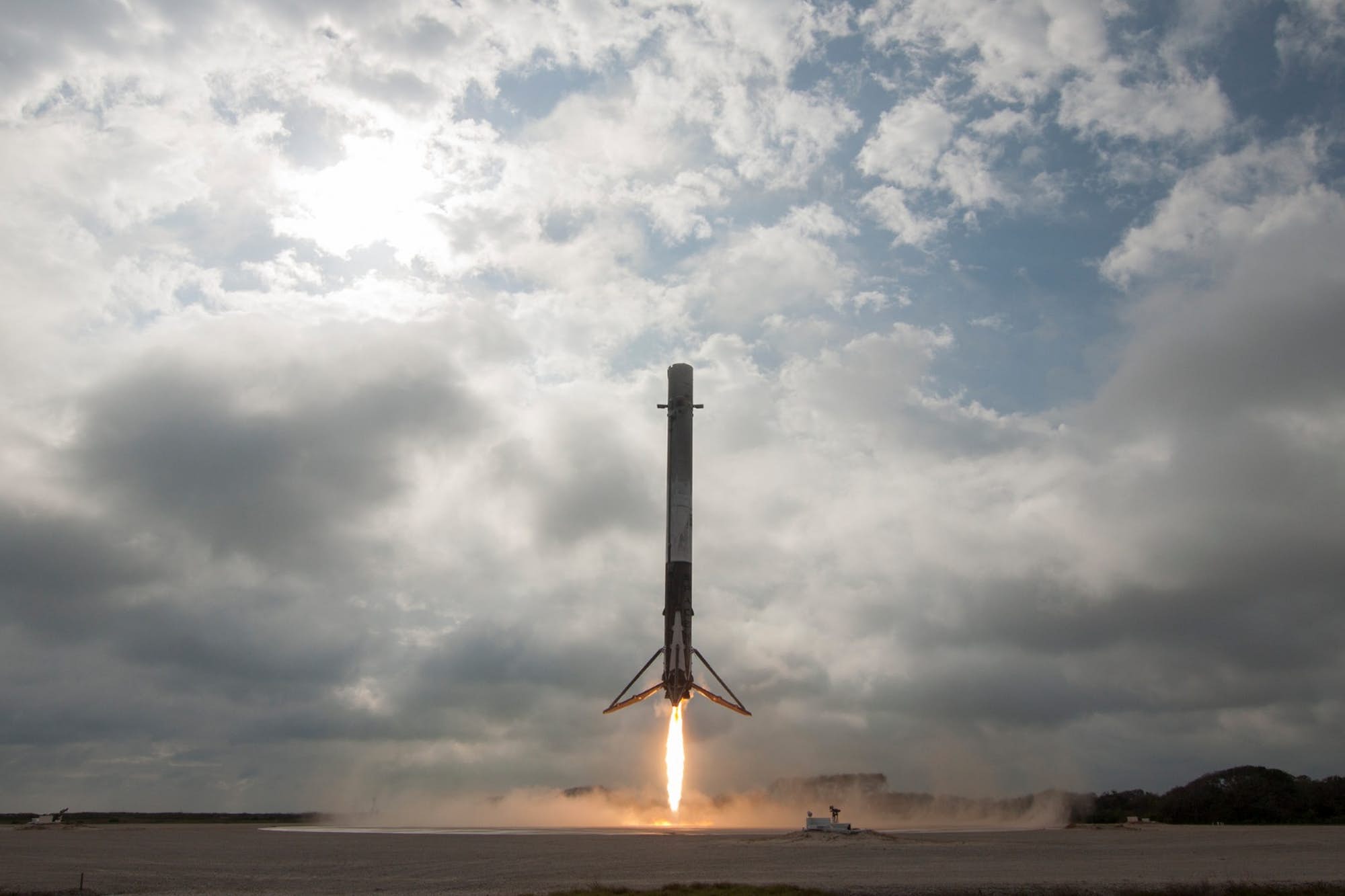May is graduation month, and with it, school star party season is about to conclude. If you happen to be out this coming weekend showing the sky off to the public, keep an eye out for one of the top celestial sights that you won’t see at the eyepiece, as we’re in for a slew of good visible passes of the International Space Station worldwide.
Continue reading “The International Space Station Rides High Through the May Sky”Astronauts Could Rely on Algae as the Perfect Life Support Partner
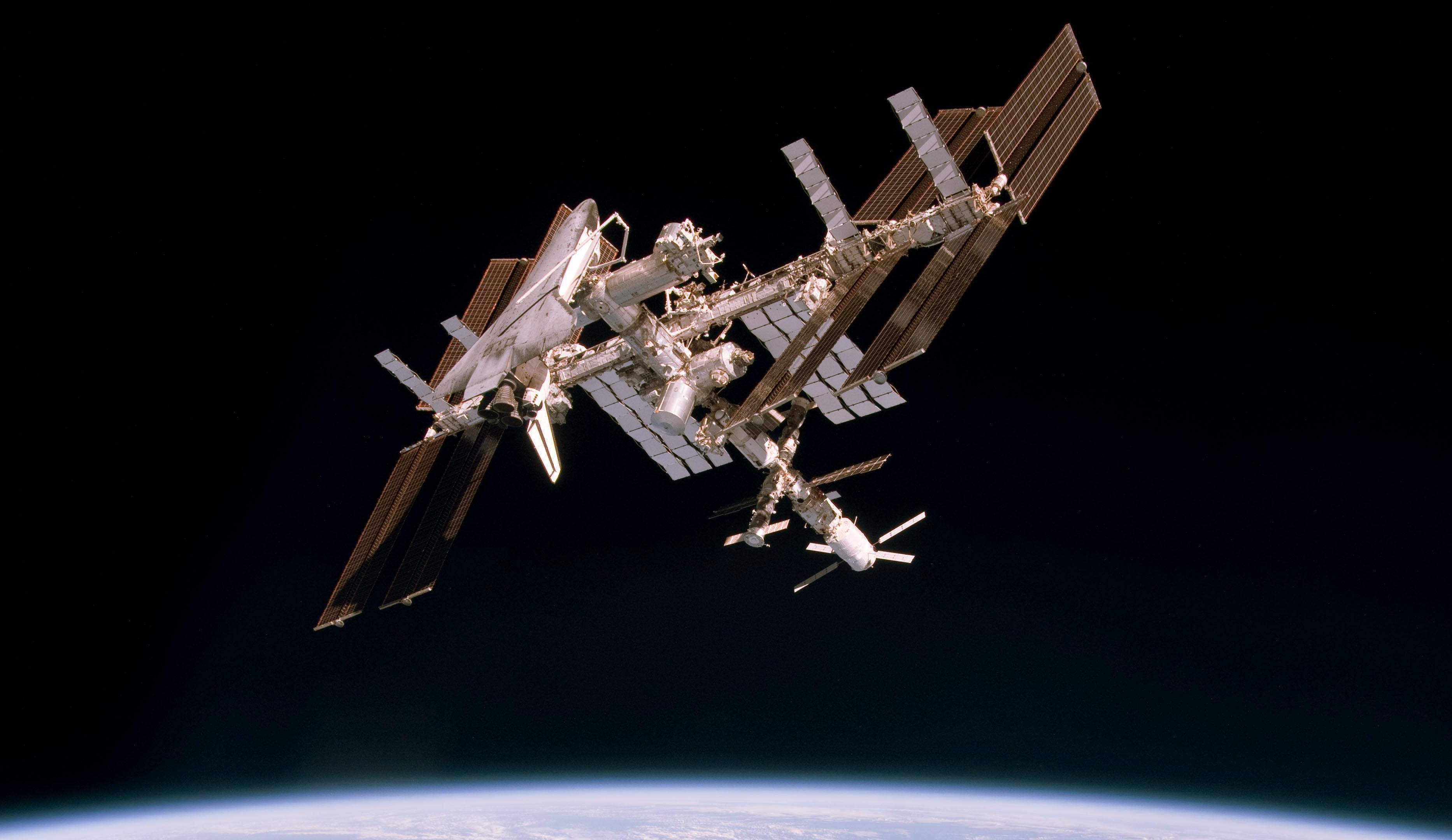
When planning for long-duration crewed missions, one of the most important things is to make sure that the crews have enough of the bare essentials to last. This is no easy
According to a new investigation being conducted aboard the International Space Station, a possible solution could lie with a hybrid life support system (LSS). In such a system, which could be used aboard spacecraft and space stations in the near future, microalgae would be used to clean the air and water, and possibly even manufacture food for the crew.
Continue reading “Astronauts Could Rely on Algae as the Perfect Life Support Partner”Extreme Bacteria on the Space Station are Evolving to Handle the Harsh Conditions, not to Make Astronauts Sick
For years, scientists have been conducting studies aboard the International Space Station (ISS) to determine the effects of living in space on humans and micro-organisms. In addition to the high levels of radiation, there are also worries that long-term exposure to microgravity could cause genetic mutations. Understanding these, and coming up with counter-measures, is essential if humanity is to become a truly space-faring species.
Interestingly enough, a team of researchers from Northwestern University recently conducted a study with bacteria that was kept aboard the ISS. Contrary to what many suspected, the bacteria did not mutate into a drug-resistant super strain, but instead mutated to adapt to its environment. These results could be vital when it comes to understanding how living beings will adapt to the stressful environment of space.
Continue reading “Extreme Bacteria on the Space Station are Evolving to Handle the Harsh Conditions, not to Make Astronauts Sick”A Japanese Company is About to Test a Tiny Space Elevator… in Space
Let’s be honest, launching things into space with rockets is a pretty inefficient way to do things. Not only are rockets expensive to build, they also need a ton of fuel in order to achieve escape velocity. And while the costs of individual launches are being reduced thanks to concepts like reusable rockets and space planes, a more permanent solution could be to build a Space Elevator.
And while such a project of mega-engineering is simply not feasible right now, there are many scientists and companies around the world that are dedicated to making a space elevator a reality within our lifetimes. For example, a team of Japanese engineers from Shizuoka University‘s Faculty of Engineering recently created a scale model of a space elevator that they will be launching into space tomorrow (on September 11th).
Continue reading “A Japanese Company is About to Test a Tiny Space Elevator… in Space”
NASA is Looking for New Ways to Deal With Trash on Deep Space Missions
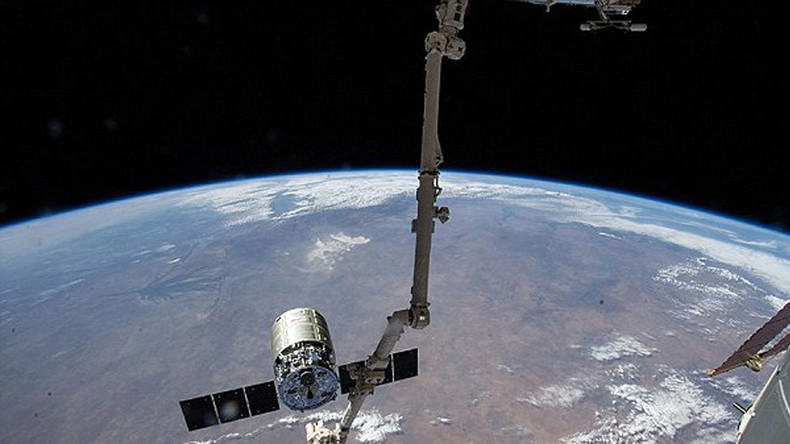
Life aboard the International Space Station is characterized by careful work and efficiency measures. Not only do astronauts rely on an average of 12 metric tons of supplies a year – which is shipped to the station from Earth – they also produce a few metric tons of garbage. This garbage must be carefully stored so that it doesn’t accumulate, and is then sent back to the surface on commercial supply vehicles.
This system works well for a station in orbit. But what about spacecraft that are conducted long-duration missions? These ships will not have the luxury of meeting with a regular cadence of commercial ships that will drop off supplies and haul away their garbage. To address this, NASA is investigating possible solutions for how to handle space trash for deep space missions.
For this purpose, NASA is turning to its partners in the commercial sector to develop concepts for Trash Compaction and Processing Systems (TCPS). In a solicitation issued through the Next Space Technologies for Exploration Partnerships (NextSTEP), NASA recently issued a Board Agency Announcement that called for the creation of prototypes and eventually flight demonstrations that would fly to the ISS.
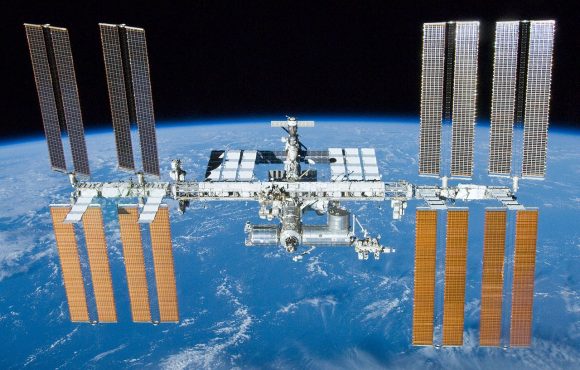
The details of the proposal were outlined in Appendix F of the Board Agency Announcement, titled “Logistics Reduction in Space by Trash Compaction and Processing System“. As they state in this section:
“NASA’s ultimate goal is to develop capabilities to enable missions that are not reliant on resupply from Earth thus making them more sustainable and affordable. NASA is implementing this by employing a capability-driven approach to its human spaceflight strategy. The approach is based on developing a suite of evolving capabilities that provide specific functions to solve exploration challenges. These investments in initial capabilities can continuously be leveraged and reused, enabling more complex operations over time and exploration of more distant solar system destinations.”
When it comes right down to it, storing trash inside a spacecraft is serious challenge. Not only does it consume precious volume, it can also create physical and biological hazards for the crew. Storing garbage also means that leftover resources can not be repurposed or recycled. All told, the BAA solicitation is looking for solutions that will compact trash, remove biological and physical hazards, and recover resources for future use.
To this end, they are looking for ideas and technologies for a TCPS that could operate on future generations of spaceships. As part of the Advanced Exploration Systems (AES) Habitat’s Logistics Reduction (LR), the TCPS is part of NASA’s larger goal of identifying and developing technologies that reduce logistical mass, volume, and the amount of time the crew dedicates to logistics management.
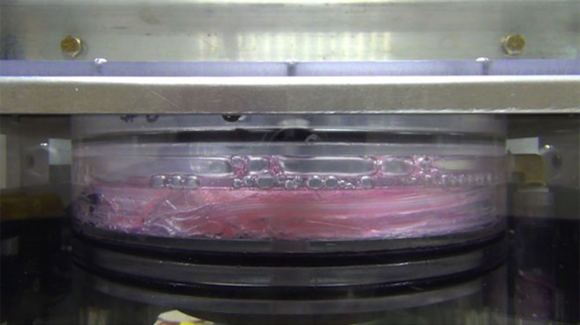
The objectives of the TCPS , as is stated in the Appendix, are fourfold:
“(1) trash compaction to a suitable form for efficient long-endurance storage; (2) safe processing of trash to eliminate and/or reduce the risk of biological activity; (3) stabilize the trash physically, geometrically, and biologically; and (4) manage gaseous, aqueous, and particulate effluents. The TCPS will be the first step toward development and testing of a fully-integrated unit for further Exploration Missions and future space vehicles.”
The development will occur in two phases. In Phase A, selected companies will create a concept TCPS system, conduct design reviews with NASA, and validate them through prototype ground demonstrations. In Phase B, a system will be prepared for transport to the ISS so that a demonstration cant take place aboard the station as early as 2022.
The various companies that submit proposals will not be working in the dark, as NASA has been developing waste management systems since the 1980s. These include recent developments like the Heat Melt Compactor (HMC) experiment, a device that will recover residual water from astronaut’s garbage and compact trash to provide volume reduction (or perhaps an ionizing radiation shield).
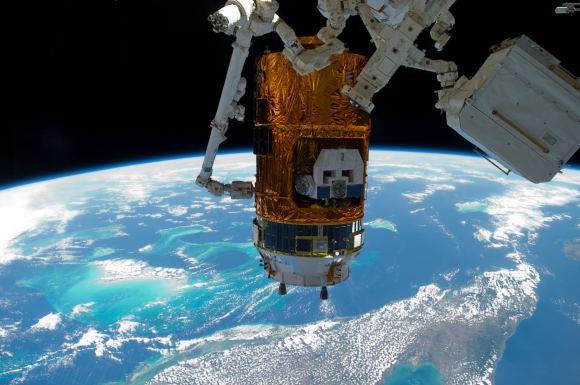
Other examples include the “trash to gas” technologies, which are currently being pursued under the Logistics Reduction and Repurposing project (LRR). Using the HMC, this process involves creating methane gas from trash to make rocket propellant. Together, these technologies would not only allow astronauts on long-duration spaceflights to conserve room, but also extract useful resources from their garbage.
NASA plans to host an industry day on July 24th in order to let potential industry partners know exactly what they are looking for, describe available NASA facilities, and answer questions from potential respondents. Official proposals from aspiring partners are due no later than August 22nd, 2018, and whichever proposals make the cut will be tested on the ISS in the coming decade!
A Satellite With a Harpoon, Net and Drag Sail to Capture Space Junk is in Orbit and Will be Tested Soon
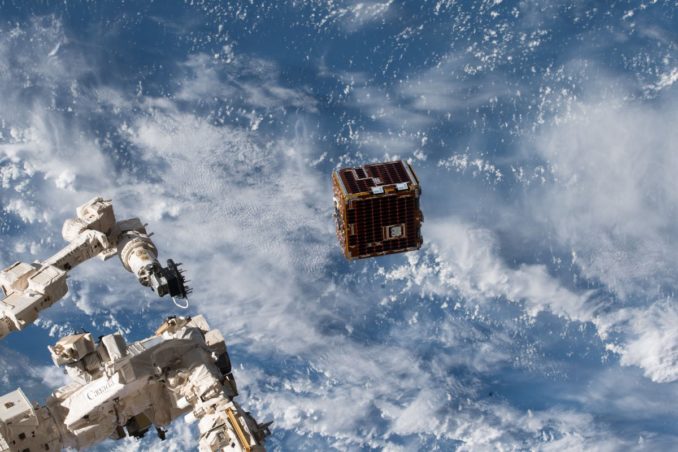
After almost seventy years of spaceflight, space debris has become a rather serious problem. This junk, which floats around in Low Earth Orbit (LEO), consists of the spent first rocket stages and non-functioning satellites and poses a major threat to long-term missions like the International Space Station and future space launches. And according to numbers released by the Space Debris Office at the European Space Operations Center (ESOC), the problem is only getting worse.
In addition, space agencies and private aerospace companies hope to launch considerably more in the way of satellites and space habitats in the coming years. As such, NASA has begun experimenting with a revolutionary new idea for removing space debris. It is known as the RemoveDebris spacecraft, which recently deployed from the ISS to conduct a series of Active Debris Removal (ADR) technology demonstrations.
This satellite was assembled by Surrey Satellite Technology Ltd. and the Surrey Space Center (at the University of Surrey in the UK) and contains experiments provided by multiple European aerospace companies. It measures roughly 1 meter (3 feet) on a side and weighs about 100 kg (220 lbs), making it the largest satellite deployed to the ISS to date.
The purpose of the RemoveDebris spacecraft is to demonstrate the effectiveness of debris nets and harpoons at capturing and removing space debris from orbit. As Sir Martin Sweeting, the Chief Executive of SSTL, said in a recent statement:
“SSTL’s expertise in designing and building low cost, small satellite missions has been fundamental to the success of RemoveDEBRIS, a landmark technology demonstrator for Active Debris Removal missions that will begin a new era of space junk clearance in Earth’s orbit.”
Aside from the Surrey Space Center and SSTL, the consortium behind the RemoveDebris spacecraft includes Airbus Defense and Space – the world’s second largest space company – Airbus Safran Launchers, Innovative Solutions in Space (ISIS), CSEM, Inria, and Stellenbosch University. The spacecraft, according to the Surrey Space Center’s website, consists of the following:
“The mission will comprise of a main satellite platform (~100kg) that once in orbit will deploy two CubeSats as artificial debris targets to demonstrate some of the technologies (net capture, harpoon capture, vision-based navigation, dragsail de-orbitation). The project is co-funded by the European Commission and the project partners, and is led by the Surrey Space Centre (SSC), University of Surrey, UK.”
For the sake of the demonstration, the “mothership” will deploy two cubesates which will simulate two pieces of space junk. For the first experiment, one of the CubeSats – designated DebrisSat 1 – will inflate its onboard balloon in order to simulate a larger piece of junk. The RemoveDebris spacecraft will then deploy its net to capture it, then guide it into the Earth’s atmosphere where the net will be released.
The second CubeSat, named DebrisSat 2, will be used to test the mothership’s tracking and ranging lasers, its algorithms, and its vision-based navigation technology. The third experiment, which will test the harpoon’s ability to capture orbiting space debris, is set to take place next March. For legal reasons, the harpoon will not be tested on an actual satellite, and will instead consist of the mothership extending an arm with a target on the end.
The harpoon will then be fired on a tether at 20 meters per second (45 mph) to tests it accuracy. After being launched to the station back on April 2nd, the satellite was deployed from the ISS’ Japanese Kibo lab module on June 20th by the stations’ Canadian robotic arm. As Guillermo Aglietti, the director of the Surrey Space Center, explained in an interview with SpaceFlight Now before the spacecraft was launched to the ISS:
“The net, as a way to capture debris, is a very flexible option because even if the debris is spinning, or has got an irregular shape, to capture it with a net is relatively low-risk compared to … going with a robotic arm, because if the debris is spinning very fast, and you try to capture it with a robotic arm, then clearly there is a problem. In addition, if you are to capture the debris with a robotic arm or a gripper, you need somewhere you can grab hold of your piece of debris without breaking off just a chunk of it.”
The net experiment is currently scheduled for September of 2018 while the second experiment is scheduled for October. When these experiments are complete, the mothership will deploy its dragsail to act as a braking mechanism. This expandable sail will experience collisions with air molecules in the Earth’s outer atmosphere, gradually reducing its orbit until it enters the denser layers of Earth’s atmosphere and burns up.
This sail will ensure that the spacecraft deorbits within eights weeks of its deployment, rather than the estimated two-and-half years it would take to happen naturally. In this respect, the RemoveDebris spacecraft will demonstrate that it is capable of tackling the problem of space debris while not adding to it.
In the end, the RemoveDebris spacecraft will test a number of key technologies designed to make orbital debris removal as simple and cost-effective as possible. If it proves effective, the ISS could be receiving multiple RemoveDebris spacecraft in the ftureu, which could then be deployed gradually to remove larger pieces of space debris that threaten the station and operational satellites.
Conor Brown is the external payloads manager of Nanoracks LLC, the company that developed the Kaber system aboard the Kibo lab module to accommodate the increasing number of MicroSats being deployed from the ISS. As he expressed in a recent statement:
“It’s wonderful to have helped facilitate this ground-breaking mission. RemoveDebris is demonstrating some extremely exciting active debris removal technologies that could have a major impact to how we manage space debris moving forward. This program is an excellent example of how small satellite capabilities have grown and how the space station can serve as a platform for missions of this scale. We’re all excited to see the results of the experiments and impact this project may have in the coming years.”
In addition to the RemoveDebris spacecraft, the ISS recently received a new tool for detecting space debris. This is known as the Space Debris Sensor (SDS), a calibrated impact sensor mounted on the exterior of the station to monitor impacts caused by small-scale space debris. Coupled with technologies designed to clean up space debris, improved monitoring will ensure that the commercialization (and perhaps even colonization) of LEO can begin.
Further Reading: Spaceflight Now, RemoveDEBRIS
Astronauts in Trouble Will be Able to Press the “Take Me Home” Button

Living and working in space for extended periods of time is hard work. Not only do the effects of weightless take a physical toll, but conducting spacewalks is a challenge in itself. During a spacewalk, astronauts can become disoriented, confused and nauseous, which makes getting home difficult. And while spacewalks have been conducted for decades, they are particularly important aboard the International Space Station (ISS).
Hence why the Charles Stark Draper Laboratory (aka. Draper Inc.), a Massachusetts-based non-profit research and development company, is designing a new spacesuit with support from NASA. In addition to gyroscopes, autonomous systems and other cutting-edge technology, this next-generation spacesuit will feature a “Take Me Home” button that will remove a lot of the confusion and guesswork from spacewalks.
Spacewalks, otherwise known as “Extra-Vehicular Activity” (EVA), are an integral part of space travel and space exploration. Aboard the ISS, spacewalks usually last between five and eight hours, depending on the nature of the work being performed. During a spacewalk, astronauts use tethers to remain fixed to the station and keep their tools from floating away.
Another safety feature that comes into play is the Simplified Aid for EVA Rescue (SAFER), a device that is worn by astronauts like a backpack. This device relies on jet thrusters that are controlled by a small joystick to allow astronauts to move around in space in the event that they become untethered and float away. This device was used extensively during the construction of the ISS, which involved over 150 spacewalks.
However, even with a SAFER on, it is not difficult for an astronaut to become disoriented during and EVA and lose their bearings. Or as Draper engineer Kevin Duda indicated in a Draper press statement, “Without a fail-proof way to return to the spacecraft, an astronaut is at risk of the worst-case scenario: lost in space.” As a space systems engineer, Duda has studied astronauts and their habitat on board the International Space Station for some time.
He and his colleagues recently filed a patent for the technology, which they refer to as an “assisted extravehicular activity self-return” system. As they described the concept in the patent:
“The system estimates a crewmember’s navigation state relative to a fixed location, for example on an accompanying orbiting spacecraft, and computes a guidance trajectory for returning the crewmember to that fixed location. The system may account for safety and clearance requirements while computing the guidance trajectory.”
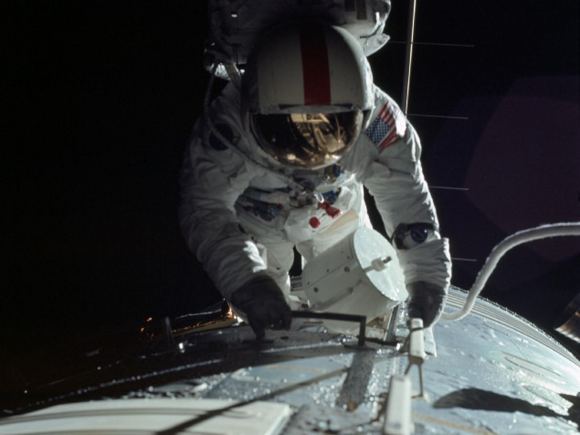
In one configuration, the system will control the crew member’s SAFER pack and follow a prescribed trajectory back to a location designated as “home”. In another, the system will provide directions in the form of visual, auditory or tactile cues to direct the crew member back to their starting point. The crew member will be able to activate the system themselves, but a remote operator will also be able to turn it on if need be.
According to Séamus Tuohy, Draper’s director of space systems, this type of return-home technology is an advance in spacesuit technology that is long overdue. “The current spacesuit features no automatic navigation solution—it is purely manual—and that could present a challenge to our astronauts if they are in an emergency,” he said.
Such a system presents multiple challenges, not the least of which has to do with Global Positioning Systems (GPS), which are simply not available in space. The system also has to compute an optimal return trajectory that accounts for time, oxygen consumption, safety and clearance requirements. Lastly, it has to be able to guide a disoriented (or even unconscious astronaut) effectively back to their airlock. As Duda explained:
“Giving astronauts a sense of direction and orientation in space is a challenge because there is no gravity and no easy way to determine which way is up and down. Our technology improves mission success in space by keeping the crew safe.”
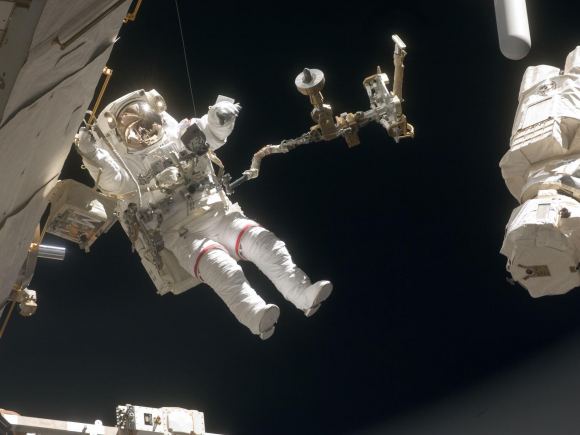
The solutions, as far as Duda and his colleagues are concerned, is to equip future spacesuits with sensors that can monitor the wearer’s movement, acceleration, and relative position to a fixed object. According to the patent, this would likely be an accompanying orbiting spacecraft. The navigation, guidance and control modules will also be programmed to accommodate various scenarios, ranging from GPS to vision-aided navigation or star tracking.
Draper has also developed proprietary software for the system that fuses data from vision-based and inertial navigation systems. The system will further benefit from the company’s extensive work in wearable technology, which also has extensive commercial applications. By developing spacesuits that allow the wearer to obtain more data from their surroundings, they are effectively bringing augmented reality technology into space.
Beyond space exploration, the company also foresees applications for their navigation system here at home. These include first responders and firefighters who have to navigate through smoke-filled rooms, skydivers falling towards the Earth, and scuba divers who might become disoriented in deep water. Literally any situation where life and death may depend on not getting lost could benefit from this technology.
Further Reading: Draper, Google Patents
The Space Station is Getting a New Gadget to Detect Space Debris
Since the 1960s, NASA and other space agencies have been sending more and more stuff into orbit. Between the spent stages of rockets, spent boosters, and satellites that have since become inactive, there’s been no shortage of artificial objects floating up there. Over time, this has created the significant (and growing) problem of space debris, which poses a serious threat to the International Space Station (ISS), active satellites and spacecraft.
While the larger pieces of debris – ranging from 5 cm (2 inches) to 1 meter (1.09 yards) in diameter – are regularly monitored by NASA and other space agencies, the smaller pieces are undetectable. Combined with how common these small bits of debris are, this makes objects that measure about 1 millimeter in size a serious threat. To address this, the ISS is relying on a new instrument known as the Space Debris Sensor (SDS).
This calibrated impact sensor, which is mounted on the exterior of the station, monitors impacts caused by small-scale space debris. The sensor was incorporated into the ISS back in September, where it will monitor impacts for the next two to three years. This information will be used to measure and characterize the orbital debris environment and help space agencies develop additional counter-measures.

Measuring about 1 square meter (~10.76 ft²), the SDS is mounted on an external payload site which faces the velocity vector of the ISS. The sensor consists of a thin front layer of Kapton – a polyimide film that remains stable at extreme temperatures – followed by a second layer located 15 cm (5.9 inches) behind it. This second Kapton layer is equipped with acoustic sensors and a grid of resistive wires, followed by a sensored-embedded backstop.
This configuration allows the sensor to measure the size, speed, direction, time, and energy of any small debris it comes into contact with. While the acoustic sensors measure the time and location of a penetrating impact, the grid measures changes in resistance to provide size estimates of the impactor. The sensors in the backstop also measure the hole created by an impactor, which is used to determine the impactor’s velocity.
This data is then examined by scientists at the White Sands Test Facility in New Mexico and at the University of Kent in the UK, where hypervelocity tests are conducted under controlled conditions. As Dr. Mark Burchell, one of the co-investigators and collaborators on the SDS from the University of Kent, told Universe Today via email:
“The idea is a multi layer device. You get a time as you pass through each layer. By triangulating signals in a layer you get position in that layer. So two times and positions give a velocity… If you know the speed and direction you can get the orbit of the dust and that can tell you if it likely comes from deep space (natural dust) or is in a similar earth orbit to satellites so is likely debris. All this in real time as it is electronic.”
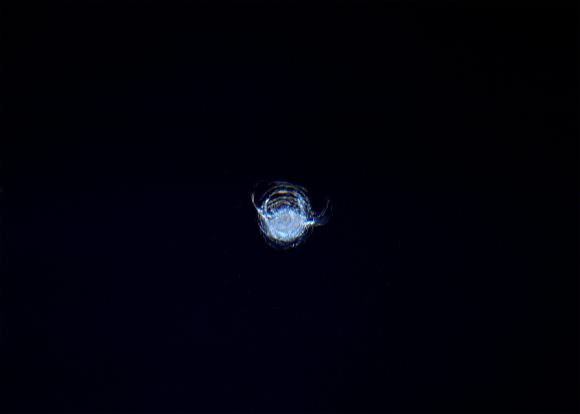
This data will improve safety aboard the ISS by allowing scientists to monitor the risks of collisions and generate more accurate estimates of how small-scale debris exists in space. As noted, the larger pieces of debris in orbit are monitored regularly. These consists of the roughly 20,000 objects that are about the size of a baseball, and an additional 50,000 that are about the size of a marble.
However, the SDS is focused on objects that are between 50 microns and 1 millimeter in diameter, which number in the millions. Though tiny, the fact that these objects move at speeds of over 28,000 km/h (17,500 mph) means that they can still cause significant damage to satellites and spacecraft. By being able to get a sense of these objects and how their population is changing in real-time, NASA will be able to determine if the problem of orbital debris is getting worse.
Knowing what the debris situation is like up there is also intrinsic to finding ways to mitigate it. This will not only come in handy when it comes to operations aoard the ISS, but in the coming years when the Space Launch System (SLS) and Orion capsule take to space. As Burchell added, knowing how likely collisions will be, and what kinds of damage they may cause, will help inform spacecraft design – particularly where shielding is concerned.
“[O]nce you know the hazard you can adjust the design of future missions to protect them from impacts, or you are more persuasive when telling satellite manufacturers they have to create less debris in future,” he said. “Or you know if you really need to get rid of old satellites/ junk before it breaks up and showers earth orbit with small mm scale debris.”
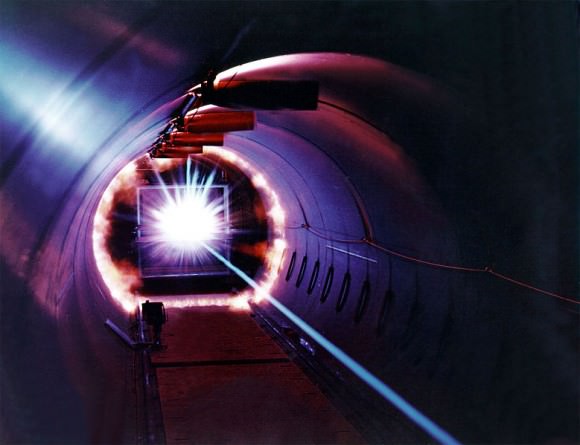
Dr. Jer Chyi Liou, in addition to being a co-investigator on the SDS, is also the NASA Chief Scientist for Orbital Debris and the Program Manager for the Orbital Debris Program Office at the Johnson Space Center. As he explained to Universe Today via email:
“The millimeter-sized orbital debris objects represent the highest penetration risk to the majority of operational spacecraft in low Earth orbit (LEO). The SDS mission will serve two purposes. First, the SDS will collect useful data on small debris at the ISS altitude. Second, the mission will demonstrate the capabilities of the SDS and enable NASA to seek mission opportunities to collect direct measurement data on millimeter-sized debris at higher LEO altitudes in the future – data that will be needed for reliable orbital debris impact risk assessments and cost-effective mitigation measures to better protect future space missions in LEO.”
The results from this experiment build upon previous information obtained by the Space Shuttle program. When the shuttles returned to Earth, teams of engineers inspected hardware that underwent collisions to determine the size and impact velocity of debris. The SDS is also validating the viability of impact sensor technology for future missions at higher altitudes, where risks from debris to spacecraft are greater than at the ISS altitude.
Further Reading: NASA
Mouse Sperm Went to Space and Produced Healthy Mice
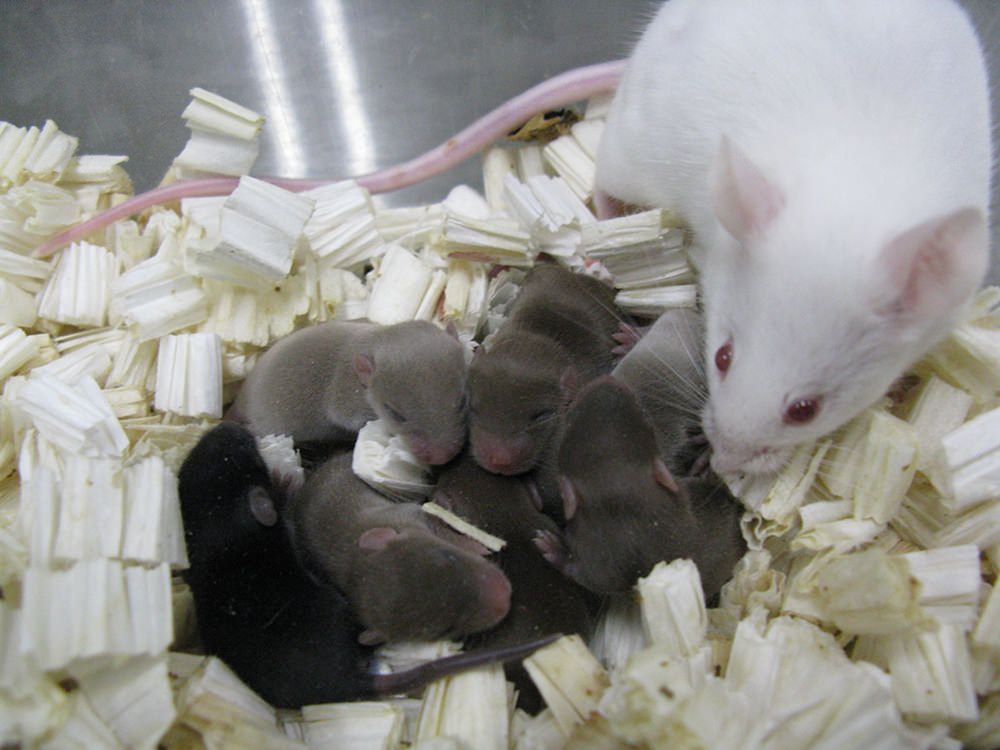
With proposed missions to Mars and plans to establish outposts on the Moon in the coming decades, there are several questions about what effects time spent in space or on other planets could have on the human body. Beyond the normal range of questions concerning the effects of radiation and lower-g on our muscles, bones, and organs, there is also the question of how space travel could impact our ability to reproduce.
Earlier this week – on Monday, May 22nd – a team of Japanese researchers announced findings that could shed light on this question. Using a sample of freeze-dried mouse sperm, the team was able to produce a litter of healthy baby mice. As part of a fertility study, the mouse sperm had spent nine months aboard the International Space Station (between 2013 and 2014). The real question now is, can the same be done for human babies?
The study was led by , a student researcher at the University of Yamanashi‘s Advanced Biotechnology Center. As she and her colleagues explain in their study – which was recently published in the Proceedings of the National Academy of Sciences – assisted reproductive technology will be needed if humanity ever intends to live in space long-term.

As such, studies that address the effect that living in space could have on human reproduction are needed first. These need to address the impact microgravity (or low-gravity) could have on fertility, human abilities to conceive, and the development of children. And more importantly, they need to deal with one of the greatest hazards of spending time in space – which is the threat posed by solar and cosmic radiation.
To be fair, one need not go far to feel the effects of space radiation. The ISS regularly receives more than 100 times the amount of radiation that Earth’s surface does, which can result in genetic damage if sufficient safeguards are not in place. On other Solar bodies – like Mars and the Moon, which do not have a protective magnetosphere – the situation is similar.
And while the effects of radiation on adults has been studied extensively, the potential damage that could be caused to our offspring has not. How might solar and cosmic radiation affect our ability to reproduce, and how might this radiation affect children when they are still in the womb, and once they are born? Hoping to take the first steps in addressing these questions, Wakayama and her colleagues selected the spermatozoa of mice.
They specifically chose mice since they are a mammalian species that reproduces sexually. As
“So far, only fish or salamanders were examined for reproduction in space. However, mammalian species are very different compared to those species, such as being born from a mother (viviparity). To know whether mammalian reproduction is possible or not, we must use mammalian species for experiments. However, mammalian species such as mice or rats are very sensitive and difficult to take care of by astronauts aboard the ISS, especially for a reproduction study. Therefore, we [have not conducted these studies] until now. We are planning to do more experiments such as the effect of microgravity for embryo development.”
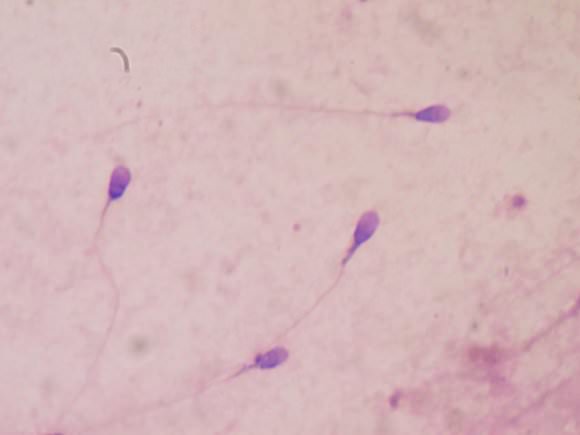
The samples spent nine months aboard the ISS, during which time they were kept at a constant temperature of -95 °C (-139 °F). During launch and recovery, however, they were at room temperature. After retrieval, Wakayama and her team found that the samples had suffered some minor damage,.
“Sperm preserved in space had DNA damage even after only 9 months by space radiation,” said . “However, that damage was not strong and could be repaired when fertilized by oocytes capacity. Therefore, we could obtain normal, healthy offspring. This suggests to me that we must examine the effect when sperm are preserved for longer periods.”
In addition to being reparable, the sperm samples were still able to fertilize mouse embryos (once they were brought back to Earth) and produce mouse offspring, all of which grew to maturity and showed normal fertility levels. They also noted that the fertilization and birth rates were similar to those of control groups, and that only minor genomic differences existed between those and the mouse created using the test sperm.
From all this, they demonstrated that while exposure to space radiation can damage DNA, it need not affect the production of viable offspring (at least within a nine month period). Moreover, the results indicate that human and domestic animals could be produced from space-preserved spermatozoa, which could be mighty useful when it comes to colonizing space and other planets.
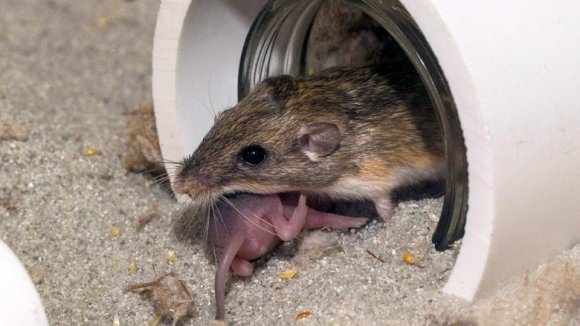
As put it, this research builds on fertilization practices already established on Earth, and demonstrated that these same practices could be used in space:
“Our main subject is domestic animal reproduction. In the current situation on the ground, many animals are born from preserves spermatozoa. Especially in Japan, 100% of milk cows were born from preserved sperm due to economic and breeding reasons. Sometimes, sperm that has been stored for more than 10 years was used to produce cows. If humans live in space for many years, then, our results showed that we can eat beefsteak in the space. For that purpose, we did this study. For humans, our finding will probably help infertile couples.”
This research also paves the way for additional tests that would seek to measure the effects of space radiation on ova and the female reproduction system. Not only could these tests tell us a great deal about how time in space could affect female fertility, it could also have serious implications for astronaut safety. As Ulrike Luderer, a professor of medicine at the University of California and one of the co-authors on the paper said in a statement to the AFP:
“These types of exposures can cause early ovarian failure and ovarian cancer, as well as other osteoporosis, cardiovascular disease and neurocognitive diseases like Alzheimer’s. Half the astronauts in the NASA’s new astronaut classes are women. So it is really important to know what chronic health effects there could be for women exposed to long-term deep space radiation.”

However, a lingering issue with these sorts of tests is being able to differentiate between the effects of microgravity and radiation. In the past, research has been conducted that showed how exposure to simulated microgravity can reduce DNA repair capacity and induce DNA damage in humans. Other studies have raised the issue of the interplay between the two, and how further experiments are needed to address the precise impact of each.
In the future, it may be possible to differentiate between the two by placing samples of spermatazoa and ova in a torus that is capable of simulating Earth gravity (1 g). Similarly, shielded modules could be used to isolate the effects of low or even micro-gravity. Beyond that, there will likely be lingering uncertainties until such time as babies are actually born in space, or in a lunar or Martian environment.
And of course, the long-terms impact of reduced gravity and radiation on human evolution remains to be seen. In all likelihood, that won’t become clear for generations to come, and will require multi-generational studies of children born away from Earth to see how they and their progeny differ.
Drone Captures Amazing Footage of Falcon 9 Landing
Let’s just take a moment to admire how amazing it is when science fiction becomes routinely real:
https://www.instagram.com/p/BQtNTk4Brqp/
SpaceX CEO Elon Musk shared this amazing drone footage of the Falcon 9 rocket’s first stage returning for a perfect landing after the launch of the Dragon capsule to the International Space Station. It drops flawlessly through the clouds, easy as pie, touching down at SpaceX’s Landing Zone 1 at Cape Canaveral.
As cool as the first stage landing was, the launch had a notable starting place. As our Ken Kremer reported yesterday, “the era of undesired idleness for America’s most famous launch pad was broken at last by the rumbling thunder of a SpaceX Falcon 9.” The SpaceX launch took place on the historic Launchpad 39-A, the same spot where Apollo astronauts began their journey to the Moon and space shuttles set off on their missions.
Here’s another view of drone footage of the landing:
SpaceX’s CRS-10 resupply mission to the International Space Station was the second successful launch for the commercial space company since the launch pad explosion in September 2016. Dragon will rendezvous and be docked to the ISS, on Wednesday, March 22, bringing about 5,500 pounds of supplies and experiments.

